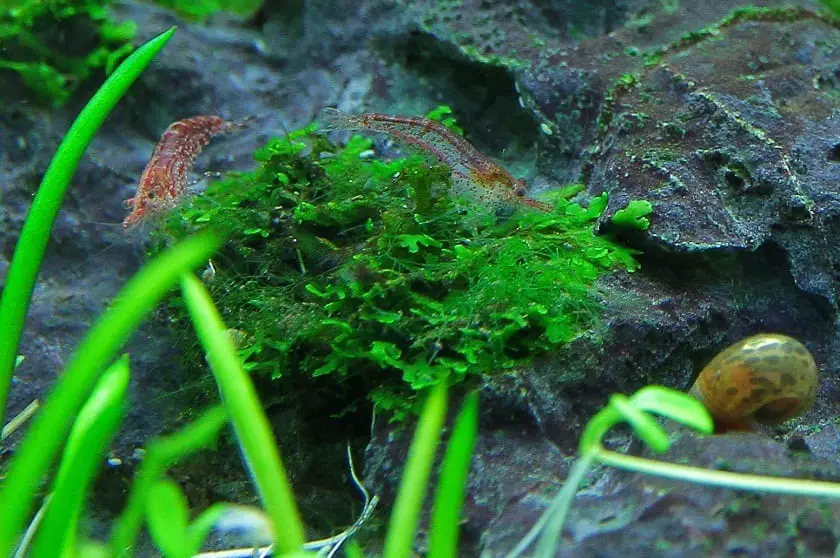
The Cladophora it’s a moss that can be placed in the water substrate so that new plants can be produced from the mother plant.
Another form of reproduction of the Cladophora, is dividing the plant in two or more pieces that later are placed in the substrate, with time they will grow and resume the original rounded shape.
Cladophora characteristics

It is a protected plant in Japan and it is usually located in the prawns, since the prawns enjoy and benefit from their presence.
It is made up of algae and acquires a rounded shape because the currents make it rotate from one side to the other with the swaying of the waves, it is common to find them in shallow waters and it is the only algae that is not fought given its benefits.
It has the ability to survive very low temperatures and in Japan, specifically in Lake Akan, they celebrate the presence of the Cladophora by holding festivals in honor of its existence.
Form of the Cladophora
The Cladophora form huge ballswhose interior eventually remains hollow because the stems that are there die because the light does not reach them.
Reproduction and propagation of Cladophora
As we said at the beginning of the post, to reproduce it it will be enough that you divide it in two and then return them to place on the substrate to move freely and very slowly they acquire the original shape, you can also give it the shape manually; propagation originates in the same way by dividing the ball.
They are ideal to have them in aquariums where there are prawns since it makes it easier for them to feed because quantities of particles accumulate in the balls that these animals like and because of their slow growth they do not represent a threat to the rest of the aquarium plants, since to achieve a large size they need a lot of time.
In any case, a adequate level of CO2 and lighting without exaggeration, so that this does not stimulate the growth of the Cladophora too much.
Plant does not need to be prunedIf you notice any signs of discoloration or wilting, simply remove it from the aquarium.
Illumination of the Cladophora
They survive very well with poor lighting, if the aquarium is placed in a place with a lot of light, try to place it where it affects less so that they do not grow too much, an indication that it is receiving a lot of lighting is the fact that they float Because of the sun’s rays plus the presence of CO2, photosynthesis is stimulated and this makes the plant float due to the O2 bubbles.
However, be careful because the total lack of illumination irreparably damages the Cladophora, so with a correct lighting and the amount of CO2 necessary, it will grow well and slowly.
Cladophora cultivation

It is not planted, the ball is simply placed in the place you prefer in the aquarium, there are those who open it and place it like a mat in the bottom, others prefer to put several balls in the aquarium substrate, divide them, place them on rocks and thus favor the formation of a vegetable tapestry.
In fact, when they have reached a large size, it is advisable to divide it into portions since the absence of light inside can cause death. Other causes of death of the plant are lack of food, poor water filtering and lack of light.
He is able to withstand temperatures between 5 ° and -28 ° C and wide ranges of alkalinity and acidity, it survives without any problem in fact, in the presence of acidic and basic salts.
The Cladophora it is a very showy plant that are usually placed in a visible place in the aquarium, always in the foreground, it also stands out for its ease of care, since it is not only placed on the substrate and depends only on light and CO2 to grow healthy, it is easy to reproduce it it does not invade or compete with the rest of the plants.

One thought on “Cladophora characteristics and care”